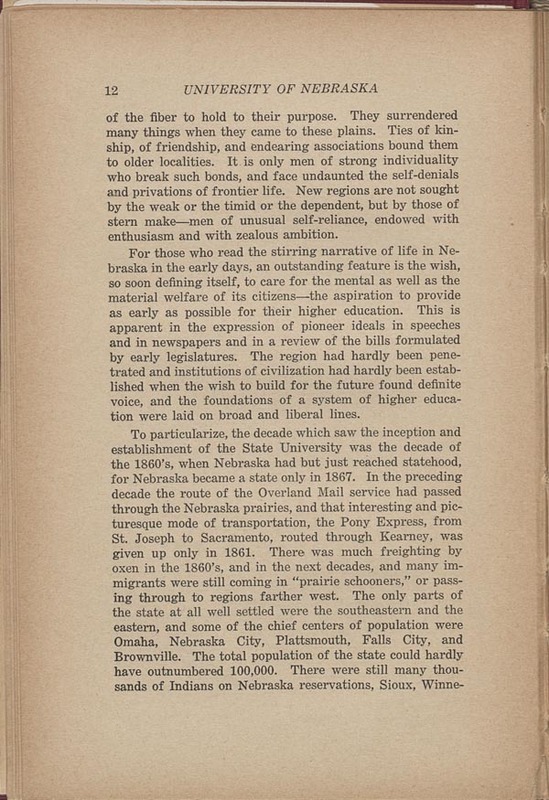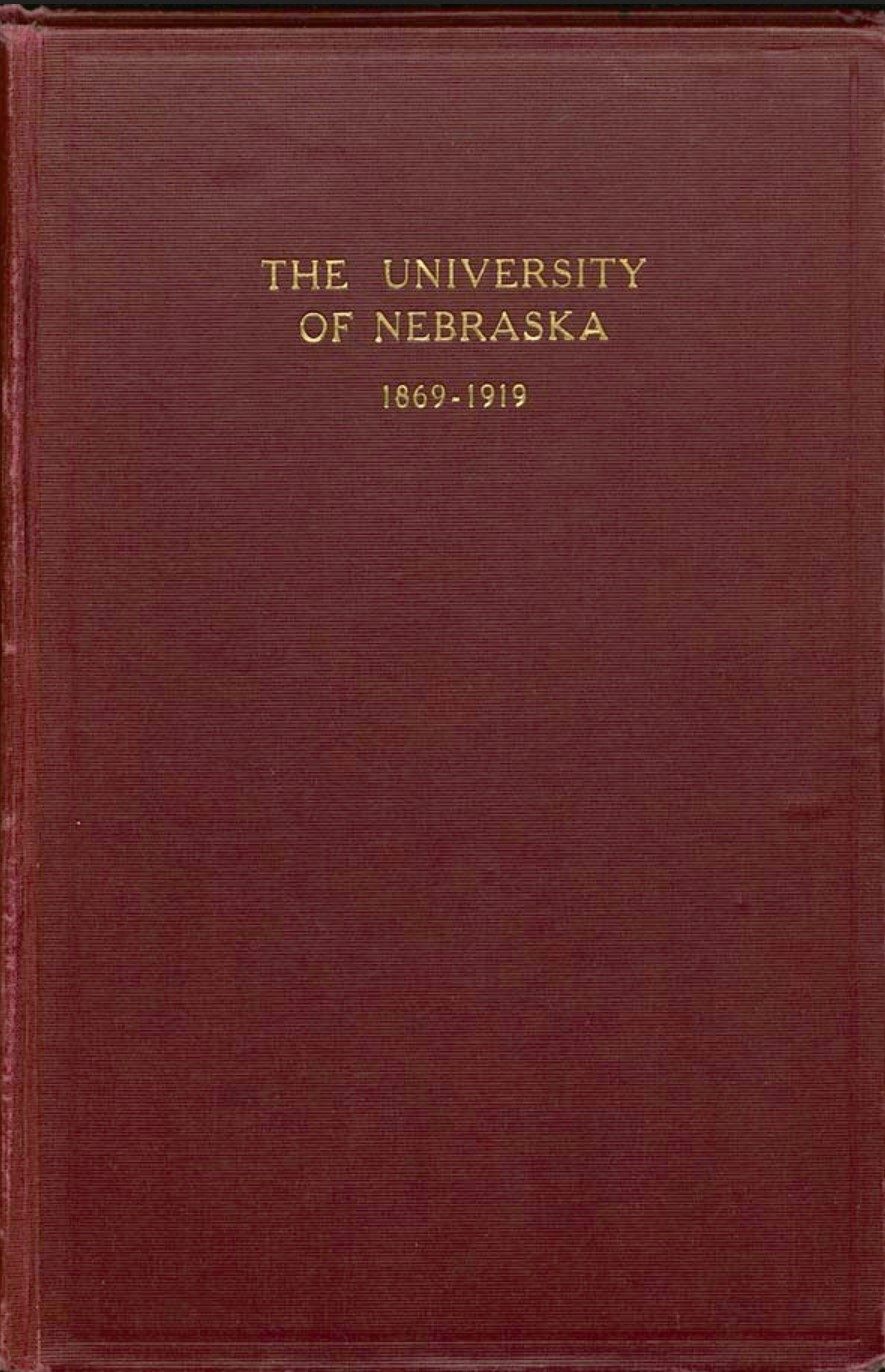016
Item
-
Title
-
016
-
Description
-
Semi-Centennial Anniversary Book: The University of Nebraska, 1869-1919
-
Transcription
-
of the fiber to hold to their purpose. They surrendered many things when they came to these plains. Ties of kinship, of friendship, and endearing associations bound them to older localities. It is only men of strong individuality who break such bonds, and face undaunted the self-denials and privations of frontier life. New regions are not sought by the weak or the timid or the dependent, but by those of stern make—men of unusual se1f-reliance, endowed with enthusiasm and with zealous ambition.
For those who read the stirring narrative of life in Nebraska in the early days, an outstanding feature is the wish, so soon defining itself, to care for the mental as well as the material welfare of its citizens—the aspiration to provide as early as possible for their higher education. This is apparent in the expression of pioneer ideals in speeches and in newspapers and in a review of the bills formulated by early legislatures. The region had hardly been penetrated and institutions of civilization had hardly been established when the wish to build for the future found definite voice, and the foundations of a system of higher education were laid on broad and liberal lines.
To particularize, the decade which saw the inception and establishment of the State University was the decade of the 1860's, when Nebraska had but just reached statehood, for Nebraska became a state only in 1867. In the preceding decade the route of the Overland Mail service had passed through the Nebraska prairies, and that interesting and picturesque mode of transportation, the Pony Express, from St. Joseph to Sacramento, routed through Kearney, was given up only in 1861. There was much freighting by oxen in the 1860's, and in the next decades, and many immigrants were still coming in "prairie schooners," or passing through to regions farther west. The only parts of the state at all well settled were the southeastern and the eastern, and some of the chief centers of population were Omaha, Nebraska City, Plattsmouth, Falls City, and Brownville. The total population of the state could hardly have outnumbered 100,000. There were still many thousands of Indians on Nebraska reservations, Sioux, Winne-
-
Rights
-
To inquire about usage, please contact Archives & Special Collections, University of Nebraska-Lincoln Libraries. These images are for educational use only. Not all images are available for publication.



